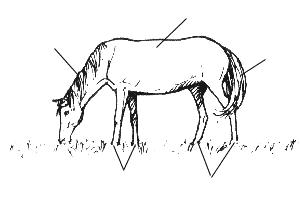Finding a tire shop is not a big problem, especially in cities. But sometimes there is a need for urgent wheel repair directly at the site of a puncture or tire rupture. On the road, for example. On some business trip or travel. Far from any civilization, where there is simply nowhere to look for help. How This do?
In the old days, drivers caught by surprise used tried-and-true remedies. They were as follows:
The big disadvantages of the method were its labor intensity and the almost inevitable cases of the disk being crushed at the edges.
For tubeless tires such defects are fatal. It will definitely lose its tightness and will not hold air. To prevent this from happening, the damaged disc will have to be straightened or thrown away. In such a situation, the cash costs for a new disk are inevitable.
In a standard tire service, virtually the same operations are performed. The only difference is that there they are more thought out, mechanized, and more careful in relation to the disk. As a result, after repair it exactly retains its previous geometry. But How achieve this himself?
What modern craftsmen offer
If you look on the Internet, you can see many options. homemade mechanized devices for wheel beading. The overwhelming number of them are fundamentally focused on capabilities professional equipment. The features relate mainly only to some design solutions.
Homemade machines perform the same functions as standard mechanisms in tire shops. At the same time they:
- simpler in design;
- have manual drive for dismantling;
- reliable in operation;
- small-sized;
- easy to disassemble and convenient to store (some models can fit in the trunk of a car);
- allow for prompt repairs outside the tire shop, directly at the accident site;
- the vast majority of all handicraft devices are designed for wheels passenger cars.
It goes without saying that wheel removal is incomparably more economical for owners of such machines than a similar service at a car service center.
A few illustrative examples
- Vertical console with bracket on the table.
Device:
- an improvised table with a vertical stand (on top there is a threaded thread);
- locking washer for fixing the disc with internal thread and bushing-axle;
- movable console with bracket;
- a metal rod with blades that bend the tire bead away from the disc;
- rod fixing bolt.
Design models:
Non-adjustable paddle
Handicraft design (the main drawback is the lack of a system for pressing the rod; the blade has to be constantly hammered with a sledgehammer).

Vertical console with bracket
Adjustable paddle
Modern design. The console and bracket with spatula were purchased at an auto parts store. The disadvantages include the short handle, which does not provide effective pressure on the tire.

Vertical console with bracket without table
The auxiliary tool, console and bracket are presented here in a factory-made version. Any plane can be used as a table. The disadvantage is that the dismantling process is cumbersome, requiring the use of many tools at once. In addition, there is no table here - all operations have to be performed, figuratively speaking, “on the knee”.

There are many other options. There is no point in considering all inventions: they are designed approximately the same.
Let's look at one model. It eliminates as much as possible all the above-mentioned shortcomings. It is quite simple to manufacture the entire machine yourself, without resorting to the cost of purchased spare parts.
DIY tire changing machine
Drawings with dimensions- the first thing where any practical activity begins. In this case, let's consider very convenient option machine that combines the entire range of tire fitting tasks.
This circuit diagram device and functioning of the beading mechanism:

In its natural form (after fairly simple assembly) the machine will look like this:

How to assemble this machine and from what?
Design elements:
Frame
It is made from rectangular steel profile size 50x25 mm. It needs to be cut into five pieces and welded into one stable base. The length of the run-up of parallel stops and connecting them profile pipe can be adjusted to fit the dimensions of the car trunk.
Vertical stand
Executed from metal pipe with a diameter of no more than 50 mm (according to the width of the frame components). Attaching to the base can be done using two methods:
Welding into one inseparable whole (non-separable version).
Fixed with a bolt. In this case, a sleeve corresponding to the internal diameter of the pipe must be welded to the frame, and a hole must be drilled in the pipe itself and threaded for the bolt. This option makes the structure collapsible, smaller in size and mobile (suitable for use on the road).
Vertical stand attachments
Washer-platform (flange) with holes for mounting the disk. It is intended for installation, external inspection of the damaged wheel and its final dismantling after dismantling.

Steel corner
With ribs 40-50 mm for attaching a loop under the lever. It is tightly welded to the stand; the loop itself can be fastened with screws through drilled holes with thread (as in the diagram above). But the welding method of connecting parts is more reliable and simpler.
Lever arm
Designed for removing a tire rim from a disk.

The diagram shows the loop principle of connecting the lever to the riser . He gives the ability to apply effective pressure on the tire and tear its edge off the rim.
The dimensions shown in the drawing are indicative only. The main thing is that the general proportion is maintained.
Element A
Short tubular bracket with hole for extension pipe. The extension cord is removable. It is inserted into the device before starting work and provides greater pressing power.
Element B
Tire rim support (foot). It is made from the same rectangular profile 50x25 mm as the frame. One end of the stop is attached to the bracket through a loop, the second is flattened and sanded to a rounded shape. This avoids damage to the rubber when pressing with your paw.
Note
When choosing a material for a machine, one should take into account the large loads on all structural elements. Soft steel grades (such as St. 45) are unsuitable here.
To avoid metal corrosion, all machine components must be painted with a persistent oil emulsion.
How to remove a wheel
Manual the machine works as follows. Sequence of operations:
Visual inspection. The wheel is installed on the washer pad and checked for surface damage to the tire and rim.
Beading:
— the wheel is placed on the support frame under the lever;
— an extension cord is inserted into the lever;
— the paw is directed to the joint of the tire with the disk;
- the lever is pressed.
The operation is carried out sequentially along the entire diameter of the rim. As a result, the entire outer part of the tire is separated from the rim.
Then the same steps are repeated on the back of the wheel.
Complete dismantling is carried out already on the flange vertical stand with a simple mount. It is better if it is long enough to easily remove the tire from the rim.
Wheel mounting
What is important to consider at this stage:
Disk integrity
The geometry of the rim should not be violated in any place. This is especially important for tubeless tires. Small dents on stamped discs can be straightened with a hammer. In case of major defects, the disk must be replaced. Damaged cast wheels cannot be straightened due to the fragility of the metal and are always replaced.
Tire lubrication
It reduces friction between rubber and metal during installation. A thin layer of lithol or soap solution is applied to the inner edge of the tire. This does not in any way affect the tightness and quality of the wheel.
No gaps between the disk and tire
Any gap can cause air leakage, especially from tubeless rubber. This installation defect can be easily eliminated by tapping the tire rib with a heavy hammer when inflating the wheel on a machine. As a last resort, you can use special sealing bands and gels (they are sold in all automotive stores).
Conclusion
From all of the above, a simple conclusion suggests itself: Tire changer easy to do yourself. Moreover, in any version: both stationary and mobile. One day off - no more, will be needed to purchase materials and manufacture equipment. For this you only need skillful hands and desire.
The reward for your hard work will be time and money. This way you will definitely save them!
Video
The tire replacement procedure is best performed in a specialized workshop. But such an opportunity is not always available. The cost of this service should also be taken into account. Therefore, some car enthusiasts prefer to do the installation and dismantling of tires on their own. For this you need at least the simplest tire service.
Design Features
Tire mounting kit
At first glance, the procedure does not seem very difficult. You just need to dismantle old tire from the disk and install a new one. But already at the stage of removing the tire, you can encounter a problem - too much effort must be made to perform dismantling.
You can use so-called “travel kits” for this. They are supplied with mounts various shapes and special wedges. Such tools make the replacement procedure somewhat easier, but not always. If the tire has been in use for a long time, you will need to apply more physical strength to separate it from the edge of the disk. That is why the easiest way is to make a homemade tire changing machine.
Its design should consist of the following components:
- Frame. Most often, these are two rectangular profile pipes located parallel to each other. They are connected using a steel angle.
- A vertical riser attached to the frame. It performs several functions - mounting a lever (for removing a tire) and a platform for installation rim. Its function can be performed by a welded flange from the pipe.
- The pipe to which the handle is welded. It will act as a lever when directly removing the tire.
Frame making

Two pipes located parallel to each other are connected using a steel angle or a profile structure of a smaller cross-section. Adjustable feet can be installed as optional components.
After making the frame, you should perform the following steps:
- Weld the pipe to the crossbar. Its diameter can be from 20 to 30 mm. The flange is first welded at a height of 40-60 cm.
- On the vertical part is done fastener in the form of a steel plate. It is necessary to install the lever.
The lever is designed to remove the tire from the rim. It consists of two parts - a lever arm (attached to the supporting horizontal post) and a paw, with the help of which forces will be applied to the tire.
After separating the tire from the disk, it must be completely dismantled. To do this, it is best to use a long pry bar to which the handle is welded. Having installed the disk on the flange, it is secured using a clamp. Then, using the narrow end of the mount, the edge of the tire is brought out beyond the outer part of the disk. After turning the disc over, complete dismantling tires.

At this stage it is important to pay attention to following points:
- The edge of the rim should not be deformed. This will significantly complicate the subsequent installation of the tire, especially tubeless.
- To maintain the integrity of the tire being removed, you can lubricate the narrow edge with grease. This will reduce the likelihood of cord or rubber breaking.
- When installing a new tire, it is recommended to use a soap solution.
When installing a tire on a rim you need to carefully monitor the absence of gaps between them. In addition to the tire changer, it is recommended to purchase a special set that includes sealing harnesses and pry bars of various sizes.
A punctured wheel with a spare tire that has not been repaired in time contributes to the desire to do the tire fitting yourself. But in order for this to be possible, it is necessary to have the appropriate tools, and most importantly, skills. To do your own tire mounting on the road, you need to have 2 mounting blades, as well as a device for tearing off a stuck tire from a rim (many people use a small piece of angle steel with a sledgehammer for this). But this can be done much more conveniently with the help of a jack and a tow rope.
Wheel repair on the road
The method of repair on the road described above is only suitable for last resort. For example, if there is no tire repair shop nearby. However, if you decide to always do the tire fitting yourself, then it is better for you to have a full-fledged tire fitting kit in the garage, which you can do yourself if you wish. Not only will it help you avoid queues at the tire shop in the spring and autumn, but it will also save you money.
Making a tire kit
In our case, the kit consists of two devices: the tire changing machine itself and the bead beating device, combined into one.  The bottom of the machine frame, H-shaped, 90×60 cm, is made from steel pipe rectangular section. A two-inch round pipe with a height of about one and a half meters is welded to the jumper 30 cm from the edge at a right angle; the welding site is reinforced with gussets in the shape of right triangles 5 mm thick. The old hub is put on the pipe for attaching the wheel and welded to it. The installation height of the hub is adjusted to the height of the person so that the wheel lying on it is approximately waist-high. The pipe should rise above the cylinder by at least 30 cm and not interfere with work. Somewhat below the hub, weld a bracket for attaching the bead breaker device, which can be made from a fragment of a steel sheet 4–5 mm thick by drilling a hole in it for a bolt.
The bottom of the machine frame, H-shaped, 90×60 cm, is made from steel pipe rectangular section. A two-inch round pipe with a height of about one and a half meters is welded to the jumper 30 cm from the edge at a right angle; the welding site is reinforced with gussets in the shape of right triangles 5 mm thick. The old hub is put on the pipe for attaching the wheel and welded to it. The installation height of the hub is adjusted to the height of the person so that the wheel lying on it is approximately waist-high. The pipe should rise above the cylinder by at least 30 cm and not interfere with work. Somewhat below the hub, weld a bracket for attaching the bead breaker device, which can be made from a fragment of a steel sheet 4–5 mm thick by drilling a hole in it for a bolt.
The device for beating is clearly visible in the photo. The pipe for making this assembly should be taken wider so that a long lever can be inserted into it.
The lever for removing and installing tires is made of a steel pipe about one and a half meters long, and the tips for it are made of steel rod with a diameter of 20 mm. The length of the lever may be different, it all depends on the strength of your hands and the amount of free space in the garage. It is better to make the lever tips on lathe, but you can also cut it out with a grinder with a grinding wheel, and then sand it with a flap wheel. See photo for tip sizes.
Tire removal

Tire installation
- Lubricate the tire bead, rim lip and arm mounting end soap solution.
- Place the bead piece onto the disc.
- Insert the mounting end of the lever between the mounted bead section and the disc. It is necessary that the ball of the tip rests against the disk, and the landing flange is approximately in the middle of the tip.
- Resting the lever against the pipe above the wheel, pull it towards you. In this case, the tire bead will be put on the disk in the middle of the mounting tip.
- After the first bead of the tire is put on the disk, lubricate the upper bead with soapy water and do the same with it as with the lower one.
- When the top bead of the tire fits onto the rim, you can inflate the wheel.
The smaller the angle at which the bead tip is welded to the lever, the easier it is to put the rubber on the disc. But don't overdo it.
If this angle is too small, the lever will touch the disc and scratch it during beading, so look for the optimum.
 The machine turned out to be very light, so for comfortable work it must be secured to the floor. If your garage floor is wooden, then attach the base to it with self-tapping screws. If the floor is concrete, then make several holes in it, install 8-point anchor bolts in them, and fill them with cement mortar.
The machine turned out to be very light, so for comfortable work it must be secured to the floor. If your garage floor is wooden, then attach the base to it with self-tapping screws. If the floor is concrete, then make several holes in it, install 8-point anchor bolts in them, and fill them with cement mortar.
To make work easier, and to avoid harm to the rims and tires, be sure to lubricate the lever tips, wheel rim, and tire bead with a thick soap solution. To do this, do not work with a dirty wheel; always start by cleaning it.
To repair wheels that differ from yours in the number of mounting holes and the distance between them, make adapters with studs. They should be made of metal about a centimeter thick.
A tire changing machine is the main equipment for servicing vehicles, including trucks. Usually it is installed only in specialized workshops, where it is used under the strict guidance of staff. Its most common models are Trommelberg 1850, Trommelberg 1860 + third hand, as well as others.
But it often happens that car wheels need to be replaced, but there is no opportunity to go to a service center and spend your time there to get the required service. There is a way out of the situation. This is a homemade tire changing machine that you can assemble and install in your garage yourself. Of course, it will be inferior to Trommelberg models and is unlikely to allow balancing of anchors, but its functionality will please you. Let's take a step-by-step look at how you can make such a tool for car maintenance.
1 What do you need to assemble a tire changing machine at home?
A homemade manual tire changing machine no worse than the 1850 model, which can also include a third hand, is not so difficult to assemble at home in practice. For creating quality equipment to you You will need the following types of devices:
- Frame. Usually it is made from standard profiles. Please note that you need to select parts for it based on the type of cars that you are going to repair, because for passenger and cargo versions it will vary in resistance to loads.
- The third “hand” or lever. This third part will be used directly to remove the tire.
- A vertical riser on which, in particular, the third arm will be attached. Can be made in the form of a welded flange.
To create all these parts, it is necessary to initially purchase very high-quality rolled products that will withstand heavy loads, in particular, the weight of truck parts. In order for your work in this direction to proceed as quickly and successfully as possible, it is recommended to prepare a drawing for this design in advance and order rentals based on them.
1.1 We create equipment with our own hands
So, we already have everything to make a machine for servicing the wheels of cars, including trucks, we just need to assemble it correctly. You need to do this as follows:
- We make the base of our machine from profile pipes. The distance between them must be at least 70 cm, otherwise the sample will be unstable and it will not be possible to service not only trucks, but even cars;
- Next, we attach the flange vertically to the crossbar. We must weld this element, otherwise it simply will not stick to us. Next, we install a clamp on it, to which the “hand” will be attached;
- we mount the arm itself. It must be installed on a metal element, otherwise it simply will not hold.

Calibration of a homemade balancing machine is carried out using the wheel you have, even if it is from trucks. It usually only takes a few minutes. Immediately after completing such work, you can begin to operate the equipment you made yourself.
1.2 Design advantages
A do-it-yourself loom for servicing car wheels, just like a homemade loom, has a lot of advantages.
Among them:
- low cost of production of the structure. Spare parts for tire changing machines are usually inexpensive, and in some situations they can even be made from recycled materials;
- the ability to carry out work as soon as necessary at home;
- versatility - if desired, it can be adapted to any type of wheels, including elements of trucks. It is very important to note that the correct use of such a sample prevents damage to the wheels;
- compactness – you can store this equipment for car maintenance in any place convenient for you;
- ease of assembly - several simple details and clearly followed instructions will help you create this technical miracle in just a few hours;
- significant savings in vehicle maintenance. After all, even for cargo models, complex wheel repairs are extremely rarely necessary. It is enough to use such a technique, and no problems will arise with them.

If we talk about the disadvantages of this design, then they include the impossibility of balancing wheels, as well as processing elements of trucks, as in the 1850 model. Repair of driveshafts and balancing of anchors are also not available here. For this procedure, you really need to contact specialized workshops where more complex equipment is installed, for example, Trommelberg models.
2 An alternative to a machine created independently
If you can’t make a wheel maintenance machine with your own hands, you can pay attention to the most affordable models of such equipment on sale. They allow you to perform balancing of anchors and other manipulations. Among them:
- Trommelberg 1850 is one of better version machines that allow you to remove problems with cardan shafts, as well as work with passenger car wheels. Semi-automatic Does not require extensive operator experience in working with such equipment. Extremely easy to set up and further use trommelberg 1850 can be installed both in workshops that service driveshafts, balance anchors and other car parts, and at home. Little is used for balancing anchors.
- Trommelberg 1860, which comes with a third hand. Most functional view equipment, addressed primarily to professional workshops that repair cardan shafts, where a third hand is an important element. Can also be used in living conditions, if you have to regularly service your wheels. In other cases, the trommelberg plus a third hand pattern may be too difficult for you. Can be used not only for cars, but also for trucks. It can also be used for balancing anchors, but is rarely used for such purposes.
- Protektor U-201 is an example of high-tech equipment for wheel maintenance. Designed specifically for workshops that carry out repairs of cardan elements, balancing of anchors, as well as other manipulations. Works with a wide range of wheels. Their diameter can be 12-24". Thanks to more lightweight design than in the 12-24", 1850 model, it can be used for small workshops, as well as at home. The instructions will help you understand this high-tech option.
Of course, in many cases professional machines, the same equipment trommelberg 1850, model 1860 plus a third hand, are much more precise in operation and, to be honest, are more functional thanks to the assembly, because they will even make it possible to balance anchors. However, they are often too expensive for the consumer. That is why, before purchasing them, it is worth considering the possibility of assembling the equipment with your own hands, especially since it is not so complicated.
Every car enthusiast can make his own tire changing machine. All you need is desire and patience. This article will help you with assembly own machine and will tell you some tricks.
Making such a tire changing machine is not that difficult. Unlike others homemade models, this machine is mobile. It's on wheels. After work, you can always move it to a corner. This way it won’t take up extra space.
The design is quite simple. The base is T-shaped, made of two channels 100 mm wide. The length of one channel is 590 mm, and the second 800 mm. They are welded perpendicular to each other.

On top, a pipe with a diameter of 55 mm is welded to the longer channel. The length of the pipe is selected specifically for your height. To make it more convenient for you to work with the machine. In this case, a pipe 800 mm long is used. Its thickness should not be less than 3 mm, otherwise the pipe will bend. It is also recommended to weld several corners at the base. This will strengthen the structure.

A movable foot is placed on top of the pipe. It moves due to the pipe, larger diameter. Its length is 120 mm. A small channel is welded to this pipe. The main thing is to first carve a recess on it so that it fits around the pipe. Instead of a channel, you can use corners welded together.

A heel is welded to the end of the foot. The heel can be made from a piece of an old disc. In this case, the disk is from a Zhiguli. It is important to weld it in correct location. The heel should protrude from below, that is, it must be welded slightly lower and at an angle. You can weld another small piece of metal on the heel itself, so that it protrudes even lower. This “tooth” will help when working with old, stuck tires.

After putting on the foot, a part of the profile pipe is welded to the stand. Its wall should not be less than 3 mm. The distance from the welded profile pipe to the lowered foot is 450 mm.
The movable foot and the protrusion from the profiled pipe together represent a mechanism for squeezing the tire.
This concludes our consideration of the lower part of the tire changing machine. Now let's move on to the top part.

The upper part is the bed. It is used to trim the wheels. The bed can be made from the same disk from which the heel was cut. Part of the disk is then welded to a pipe of smaller diameter than the stand. Welding is done from below so that the seam does not interfere. The pipe should be selected so that it does not dangle inside. And for fixation, you can drill holes in the stand and frame pipe, and use bolts as clamps.
For versatility, you can cut recesses in the disk for wheels of larger diameter and gazelle wheels.

The top of the frame is rotatable and removable. It is inserted according to the pipe-in-pipe principle. This device serves as a guide when boarding.
Now let's consider homemade tools, which will help you easily carry out wheel trim work. Let's look at the disassembly tool first.

The handle of this tool is made from a profile pipe or assembled from corners. The tool is tapered towards the end, and at the very tip there is a bearing.
The second tool is for assembling wheels.

The handle for it can also be made from a pipe or corners. Special attention should be given to the tip. The tip is made of several parts. The first part is the tongue, made of cemented tool steel.
To him with reverse side the second part is welded in the form of a pipe cut. Welding must not be done along the entire circumference; the right and upper parts must be free from seams. Otherwise, the tool will tear the rubber. It should also be fixed exactly in the position as shown in the photo.
The review of the machine is over, all that remains is to tell you how it works.

The wheel is placed on the machine and adjusted to the leg. Then a jack is placed on the lowered leg. With its help, pressing the tire from the wheel is easy. Once you have completely pressed the tire away from the rim, you can begin beading.

The wheel is installed on the frame and twisted so that it does not spin. Then, having previously lubricated the tire, the edge is pryed off with a pry bar or a small crowbar.

A beading tool is inserted into the resulting gap and, using a guide, we move it around the circumference of the disk.
The wheel assembly is as follows.

The tire must be generously lubricated. The tongue of the assembly tool must be inserted into the gap between the wheel and the tire. Then, using the lever, move the tool around the circle, while using your other hand to help the tire cling to the side of the rim. If necessary, the tool can be raised.
Having reached the end, the wheel will be ready.
Video: do-it-yourself tire changing machine - part one.
Video: second part.








